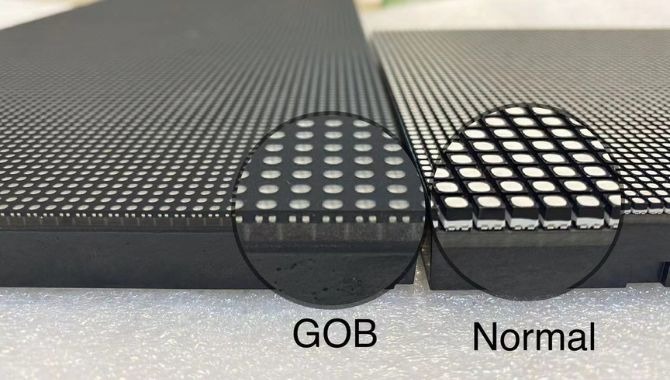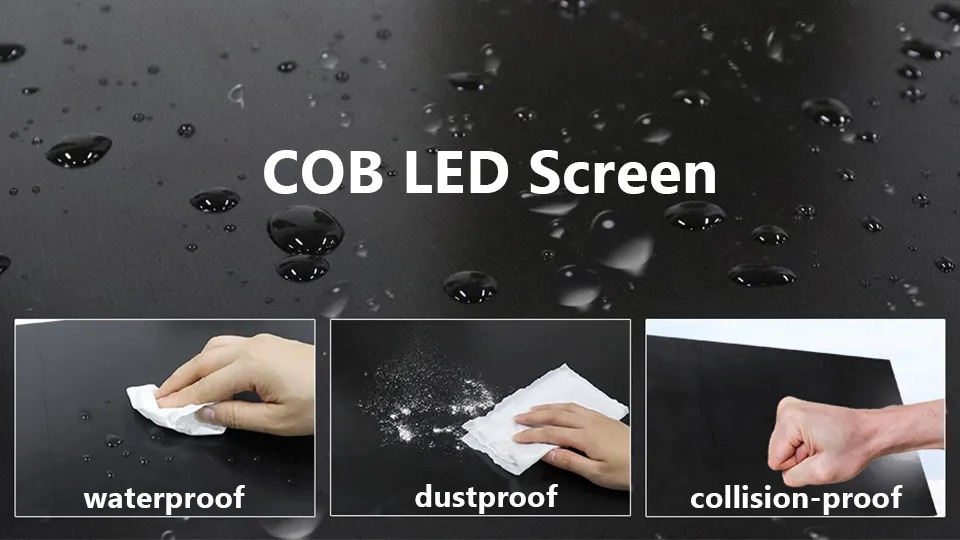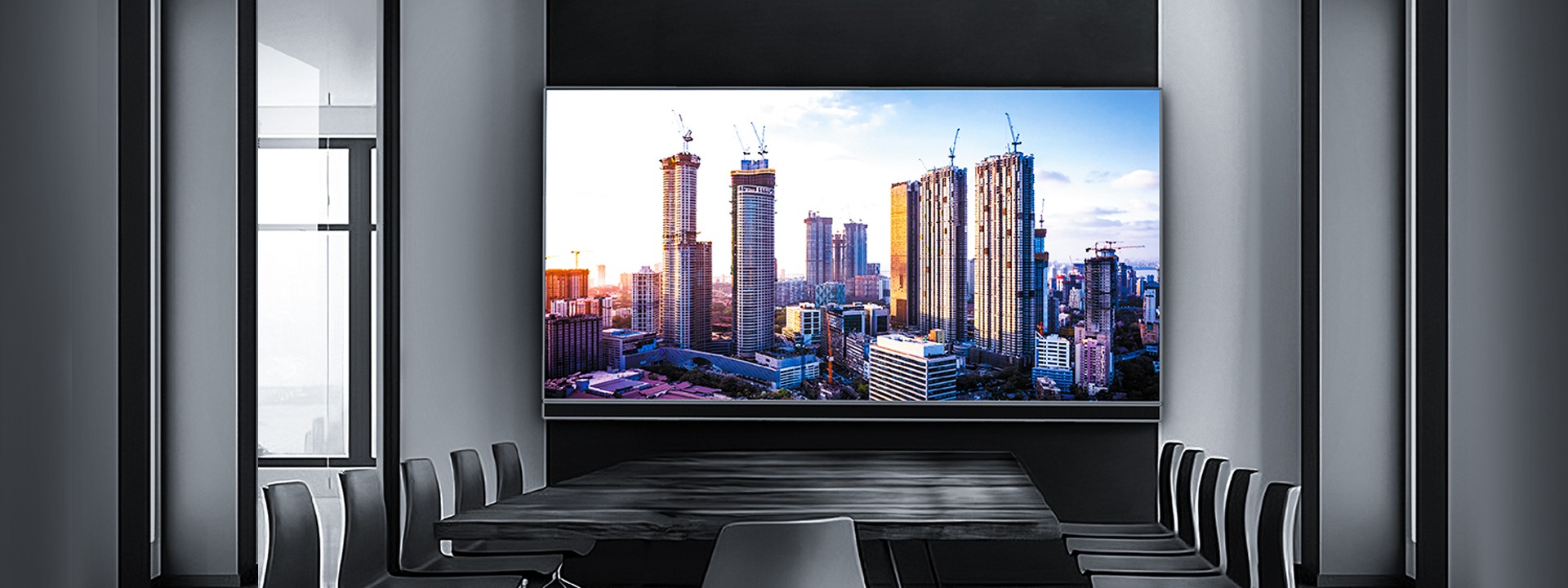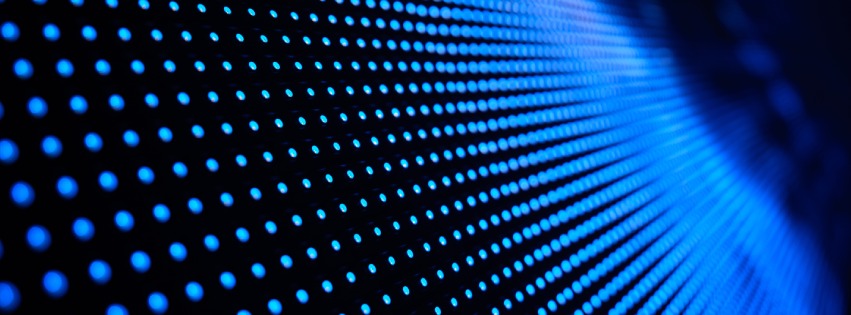1. Introduction
With the rapid changes in the LED display screen market demand, the need for fine pixel LED displays and high protective performance is increasing. GOB and COB technologies have become two major competitors in the industry. In the market, many users are concerned about the insufficient protection of LED displays, high maintenance costs, poor display effects, and price sensitivity. Therefore, understanding the advantages and disadvantages of these two technologies and being able to make choices based on specific application scenarios is a crucial task for every project manager, technical expert, and even corporate decision-maker. This article aims to help you make the most suitable decision for your needs by comparing the technical characteristics and application scenarios of GOB and COB.
2. What is GOB and COB?
GOB Technology (Glue on Board)
Definition: GOB technology is a surface encapsulation process that applies a layer of transparent glue between the LED chip and the PCB board to enhance protection and stability.
Core Features: Post-process reinforcement protection, effectively preventing external physical damage such as water, dust, and vibration, suitable for scenarios with high protection requirements.

COB Technology (Chip on Board)
Definition: COB technology directly encapsulates the LED chip on the PCB board, achieving better heat dissipation and overall structural compactness through integrated packaging technology.
Core Features: The integrated packaging design allows COB to provide higher stability and display effects, along with good heat dissipation performance.
Comparison with Traditional SMD Technology
Brief Mention: Compared to GOB and COB, traditional SMD LED displays mainly assemble LED beads on the PCB board, which has significant space and heat dissipation disadvantages.

3. GOB vs. COB LED Display
Technical Principles and Process Differences
GOB: Based on SMD, GOB enhances protection by applying a layer of transparent glue, with strong waterproof and dustproof capabilities.
COB: The chip is directly bonded to the PCB board, using integrated packaging technology to reduce assembly complexity and improve display precision and durability.
Protection Performance
Waterproof and Dustproof: GOB typically achieves an IP65 protection level, suitable for general indoor and outdoor environments; COB has a higher IP68 protection level, capable of withstanding harsher environments, such as humid or high-moisture areas.
Impact Resistance: The thickness of the GOB glue layer provides good protection against physical damage, while COB’s compact design may not perform as well under physical impact.
Display Effects
Contrast: COB, due to its integrated packaging, offers better black screen consistency and superior display effects compared to GOB.
Brightness Uniformity: GOB may experience some brightness unevenness due to the refraction of the glue layer, while COB has better brightness uniformity.
Pixel Pitch Limit: COB’s compactness makes it suitable for achieving smaller pixel pitches, such as P0.X, meeting ultra-high precision display needs.
Heat Dissipation and Lifespan
COB: Its integrated packaging provides better heat dissipation, ensuring long-term stable operation.
GOB: The aging of the glue layer may affect its long-term reliability, especially in high-temperature environments.
Cost and Maintenance
Initial Investment: COB has a higher unit price, but lower maintenance costs in the long run.
Repair Difficulty: GOB’s modular design makes it easier to replace and repair, while COB requires full-screen repair, making maintenance more challenging.
4. Typical Application Scenarios
GOB LED Display
Mid-to-Low-End Commercial Use: Such as conference rooms, retail stores, and other display environments with limited budgets but high protection requirements.
Short-Term Rapid Deployment for Small to Medium Projects: GOB’s modular design gives it an advantage in rapid deployment.
COB LED Screen
High-End Command and Control Centers: Scenarios requiring high display effects and stability, where COB can provide better display quality and stability.
Outdoor High-Humidity Environments: Such as aquariums or areas with frequent rain and fog, where COB’s high protection performance and stability are more suitable.
Long-Term Stable 24/7 Operation Scenarios: Such as airports and large monitoring centers, where COB LED displays’ long lifespan and low maintenance needs are ideal.

5. User Decision Guide
Limited Budget but Basic Protection Needed: GOB
GOB LED displays excel in protection, and their modular design reduces budget pressure for short-term projects.
Pursuing Ultimate Display Effects and Reliability: COB
COB has significant advantages in display effects, stability, and long-term use.
6. Market Feedback and Common Misconceptions
Misconception Clarifications
“COB is always more expensive than GOB”: Although COB LED displays have a higher unit price, considering their lower maintenance costs and longer lifespan, the total cost over a 10-year lifecycle may be lower than using GOB for a video wall.
“Higher protection levels are always better”: Over-protection may bring unnecessary costs, and the cost-effectiveness of increasing protection levels needs to be weighed against specific requirements.
User Reputation Data
Rental Industry Prefers GOB: Due to GOB LED displays’ modular design, rental companies can quickly replace components, offering higher flexibility.
COB Adoption Rate in Broadcasting Grows by 30%: The broadcasting industry’s demand for COB technology’s display effects and reliability is increasing, leading to a rising adoption rate.
7. Future Technology Evolution
GOB Improvement Directions: In the future, GOB technology may further enhance light transmittance and reduce refraction issues through nano-coating technology.
COB Breakthroughs: With the development of Mini/Micro LED technology, COB technology will move towards higher integration and smaller sizes to meet more complex display needs.
8. Summary: One-Sentence Decision Advice
“Short-term budget, choose GOB; long-term investment, choose COB; harsh environments, COB reigns; regular commercial use, GOB suffices.”
Post time: Feb-24-2025





